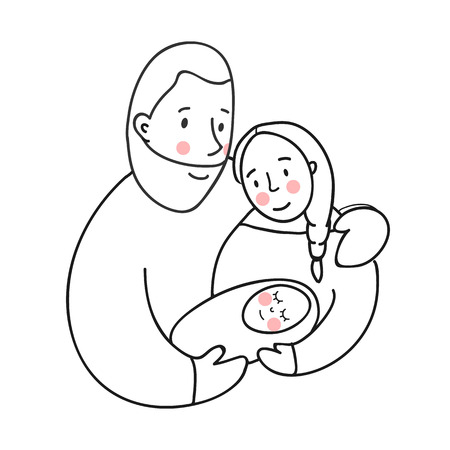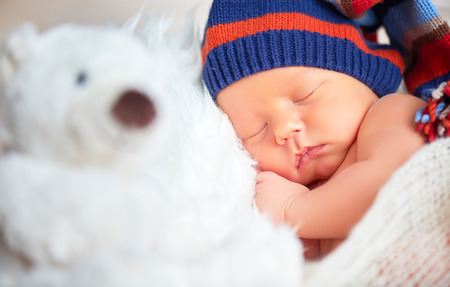Understanding the British Winter: What to Expect
When preparing your newborn or infant for the British winter, it’s essential to understand what the typical weather conditions involve. The UK winter generally spans from November through February, with temperatures frequently ranging from 0°C to 7°C (32°F to 45°F). However, sudden cold snaps can push temperatures below freezing, especially during the night or in northern regions. Rain, dampness, wind, and occasional snow are all common features of a British winter, making it crucial for parents to plan their baby’s wardrobe accordingly.
The unpredictable mix of chilly winds, persistent drizzle, and damp conditions means that dressing your baby appropriately is about more than just warmth—it’s also about ensuring they stay dry and comfortable. Babies lose heat more quickly than adults and cannot regulate their body temperature as efficiently. This makes them particularly vulnerable to hypothermia or overheating if not dressed properly.
| Weather Condition | Typical Temperature Range | Impact on Baby’s Clothing Needs |
|---|---|---|
| Frosty/Clear Days | 0°C – 5°C | Multiple warm layers, hat, mittens, insulated pram suit |
| Damp/Drizzly Days | 4°C – 8°C | Waterproof outer layer, absorbent mid-layer, warm base layer |
| Windy Conditions | 1°C – 7°C (feels colder) | Windproof jacket or cover, close-fitting hat, extra blanket in pram |
| Snow/Icy Weather | -2°C – 3°C | Thermal layers, fleece-lined suit, waterproof boots for older infants |
By understanding these weather patterns and how they affect your baby’s need for insulation and protection from moisture, you’ll be better equipped to choose the right clothing each day. Throughout this guide, we’ll provide expert advice tailored for British winters—combining safety with practical recommendations so your little one stays snug whatever the forecast.
Layering the British Way: How to Dress Your Newborn
Keeping your newborn comfortable and safe during the unpredictable British winter means mastering the art of layering. Expert recommendations focus on balancing warmth without causing overheating, an important consideration for young infants. The key is to use several light layers that you can add or remove as needed, depending on changes in temperature indoors and outdoors.
Essential Layers for UK Winters
Start with a soft cotton vest (sometimes called a bodysuit in the UK) as the base layer. These sit snugly against your babys skin and help regulate body temperature. Next, add a sleepsuit or babygrow, which covers arms, legs, and feet for full-body warmth. For outings or particularly chilly days, you’ll need an outer layer such as a pramsuit, cardigan, or soft fleece jacket. Don’t forget a hat to protect delicate heads from the cold wind when outside.
Layering Guide for British Winter
| Layer | Type of Clothing | Material Recommendation |
|---|---|---|
| Base Layer | Bodysuit/vest | Cotton (breathable and gentle) |
| Middle Layer | Sleepsuit/babygrow | Cotton or bamboo (soft and warm) |
| Outer Layer | Cardigan, pramsuit, fleece jacket | Knitwear or fleece (insulating) |
Practical Tips for Layering
A good rule of thumb is to dress your baby in one extra layer than you would wear yourself. Always check your baby’s neck or back to make sure they’re warm but not sweaty. Avoid bulky coats inside car seats for safety reasons—use blankets over harness straps instead. Remember that British homes tend to be well-heated; adjust indoor clothing accordingly to prevent overheating.

3. Essential Winter Clothing for Newborns and Infants
Keeping your baby cosy and protected during the British winter requires a selection of practical and season-appropriate clothing. Here’s a straightforward guide to the must-have items that are staples among UK parents:
Pramsuits: All-in-One Warmth
A pramsuit is an essential outer layer for newborns and infants when heading outdoors. These all-in-one suits are designed to keep your baby warm from head to toe, typically featuring built-in feet and fold-over mittens. Look for water-resistant or fleece-lined pramsuits to shield against chilly winds and damp weather.
Hats: Heat Retention for Little Heads
Babies lose heat quickly through their heads, making hats a non-negotiable item during winter outings. Opt for soft, breathable cotton or wool blend hats that cover the ears snugly without being too tight. Many British parents prefer knitted or fleece-lined options for extra warmth.
Mittens: Protecting Tiny Fingers
Mittens help prevent heat loss and keep delicate fingers warm. Choose mittens with gentle elastic around the wrists to ensure they stay put but aren’t restrictive. Some pramsuits come with integrated fold-over hand covers, which can be especially handy for younger babies who often wriggle out of separate mittens.
Cellular Blankets: Versatile Layering
Cellular blankets are a popular choice in the UK for layering both at home and when out in the pram. Their lightweight, breathable design helps regulate temperature while providing ample warmth. Cellular blankets are recommended by the NHS for safe sleep as they reduce overheating risks compared to heavy duvets or quilts.
Quick Reference Table: Must-Have Winter Items
| Clothing Item | Purpose | Recommended Material |
|---|---|---|
| Pramsuit | Full body warmth outdoors | Fleece-lined, water-resistant fabric |
| Hat | Prevents heat loss from head | Cotton, wool blend, fleece-lined |
| Mittens | Keeps hands warm | Cotton, soft knit, attached to suit if possible |
| Cellular Blanket | Layering in pram or cot | Cotton cellular weave |
By ensuring you have these core winter essentials on hand, you’ll keep your baby safe, warm, and comfortable throughout the unpredictable British winter months.
4. Staying Safe: Avoiding Overheating and Chilling
Keeping your baby safe and comfortable during the unpredictable British winter is all about striking a careful balance between warmth and avoiding overheating. British homes are often well-insulated, and heating can make indoor environments much warmer than you might expect, even when it’s freezing outside. Here are essential safety tips to help you dress your newborn or infant appropriately for the season.
Understanding TOG Ratings
TOG (Thermal Overall Grade) ratings measure the warmth of baby sleepwear and bedding, which is widely used in the UK. Choosing the right TOG helps ensure your baby is not too hot or too cold during naps and overnight. Here’s a handy table for guidance:
| Room Temperature | Recommended TOG | Suggested Sleepwear |
|---|---|---|
| Over 21°C | 0.5 TOG | Cotton vest or sleepsuit |
| 18–21°C | 1.0 TOG | Sleepsuit with light sleeping bag |
| 16–18°C | 2.5 TOG | Sleepsuit with medium sleeping bag |
| Below 16°C | 3.5 TOG (max) | Sleepsuit with thick sleeping bag; add vest if needed |
How to Check Your Baby’s Temperature—The British Way
The most reliable method to check if your baby is at a comfortable temperature is by feeling their chest or the back of their neck—not their hands or feet, as these are often cooler. Your babys skin should feel warm but not sweaty or clammy. If you notice damp hair, flushed cheeks, rapid breathing, or heat rash, your little one may be too hot. Conversely, if their core feels cool to touch, consider adding an extra layer.
Quick Safety Tips for British Parents
- Avoid using duvets, quilts, or pillows for babies under one year old—stick to approved sleeping bags and cellular blankets.
- If you’re heading outdoors, layer up with a vest, sleepsuit, cardigan, and pram suit. Remember: remove hats and extra outer layers once indoors or in the car to prevent overheating.
- Regularly check your home’s temperature with a room thermometer—aim for 16–20°C for safe infant sleep as recommended by the NHS.
- If using a hot water bottle or electric blanket for yourself, never use them in your baby’s cot.
Your Baby’s Comfort Comes First
No matter how chilly it is outside, it’s best to dress your baby in light layers that can be easily added or removed as needed. Always follow current NHS guidelines and trust your instincts—you know your little one best!
5. Navigating the Outdoors: Pram Walks and Car Journeys
Taking your baby out during a British winter requires careful preparation to ensure both warmth and safety. Whether you’re heading for a crisp pram walk in the park or embarking on a car journey, it’s essential to consider not just the weather but also UK safety regulations and best practices for infant care.
Pram Walks: Layering for Outdoor Comfort
For pram walks, layering is key. Start with a soft cotton vest as a base layer, followed by a sleepsuit and then an insulating jumper or cardigan. Finish with a cosy pramsuit or footmuff designed for cold weather. Don’t forget mittens, a hat that covers the ears, and warm socks or booties. Always check your baby’s temperature by feeling their chest or back—hands and feet may feel cool but this doesn’t always indicate they’re cold.
Recommended Layers for Pram Walks
| Layer | Example |
|---|---|
| Base Layer | Cotton vest or bodysuit |
| Middle Layer | Sleepsuit plus cardigan/jumper |
| Outer Layer | Pramsuit or footmuff |
| Accessories | Mittens, hat, booties/socks |
Car Journeys: Safety First with Car Seats
The rules change when you transfer your baby from pram to car seat. Bulky coats and snowsuits should never be worn in a car seat because they create dangerous slack in harness straps, reducing their effectiveness in a collision. Instead, dress your baby in thin layers and fasten the harness snugly against their body. Place a blanket over the secured harness if extra warmth is needed, ensuring it can be easily removed once the car warms up.
Best Practices for Car Seat Safety in Winter
- Avoid padded outerwear inside the car seat.
- Use thin, fitted clothing layers.
- Add blankets over the harness—not underneath it.
- Ensure head support with a soft hat if needed.
UK Regulations Reminder
According to UK law, infants must use an appropriate rear-facing car seat until at least 15 months old. Always follow the manufacturer’s guidance and check that straps are flat and tight—no more than two fingers should fit between the strap and your child’s collarbone.
By following these guidelines for both pram walks and car journeys, you’ll keep your baby safe, snug, and ready to enjoy the fresh British air—even in winter.
6. Practical Tips for British Homes
When dressing your baby indoors during a British winter, it’s essential to consider the unique characteristics of UK homes, including central heating, potential draughts, and widely used solutions like grobags and sleeping pods. Here’s how to ensure your newborn or infant stays safe and comfortable:
Understanding Indoor Temperatures
Most British homes rely on central heating, which can make rooms feel warm even when it’s freezing outside. However, older houses may have draughty windows or uneven heating. The ideal room temperature for your baby is between 16°C and 20°C. Use a room thermometer to monitor this, especially at night.
Recommended Indoor Baby Clothing
| Room Temperature | Clothing Layers | Additional Advice |
|---|---|---|
| 16°C–18°C (Cool) | Vest + Sleepsuit + 2.5 tog grobag/sleeping pod | Add mittens if baby feels cold to touch; check neck/back for warmth. |
| 18°C–20°C (Ideal) | Vest + Sleepsuit + 1.0–2.5 tog grobag/sleeping pod | No need for extra blankets; avoid overheating. |
| >20°C (Warm) | Cotton vest + light sleepsuit or just a light grobag (1.0 tog) | Avoid hats indoors; regularly check baby’s temperature. |
British Solutions: Grobags & Sleeping Pods
Grobags (Baby Sleep Bags): These are popular in the UK as they prevent loose bedding and keep babies safely covered without risk of suffocation. Choose the right tog rating based on your home’s temperature.
Sleeping Pods: Cosy sleep pods or nests provide comfort but should be used with caution—always follow manufacturer safety guidelines and avoid placing them near radiators or in direct sunlight.
Draughts and Safety Precautions
If your home is prone to draughts, consider using draught excluders along doors and windows in the nursery. Keep cots away from external walls and windows to reduce exposure to cold air.
Safety tip: Never place your baby too close to heaters or fires, as overheating increases SIDS risk.
Final Advice for British Parents
Always check your baby’s chest or back—not hands or feet—for an accurate sense of their warmth. Adjust layers as needed throughout the day, especially if you notice sweating or shivering. With these practical tips tailored for British homes, you can confidently dress your little one for a safe and snug winter indoors.


